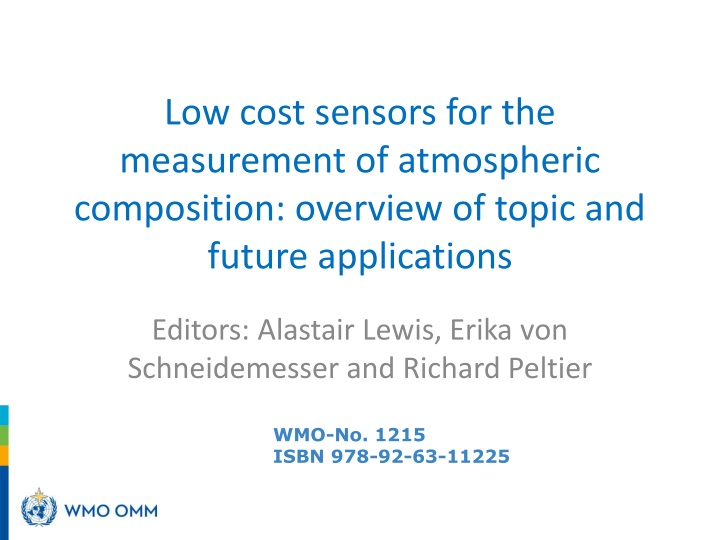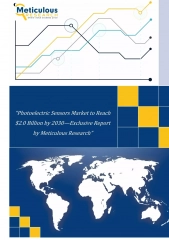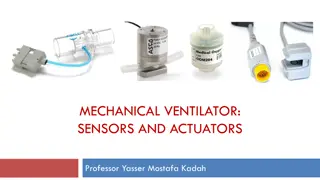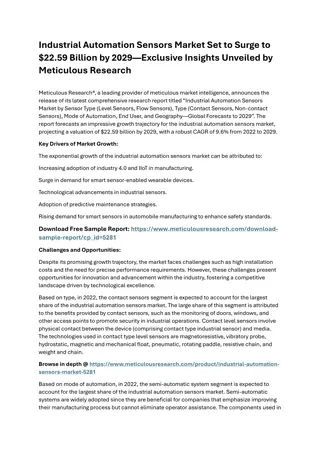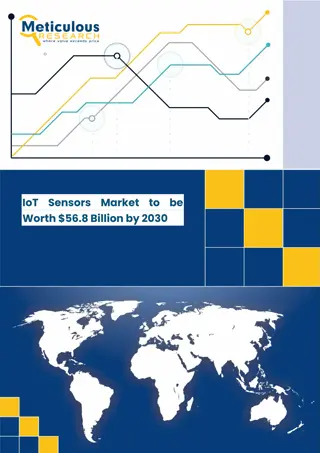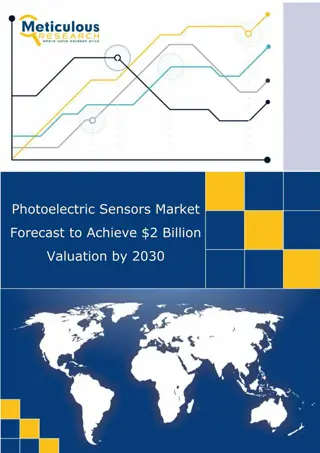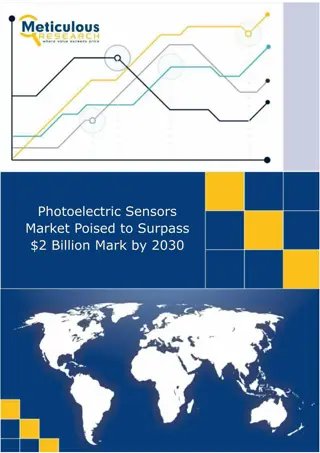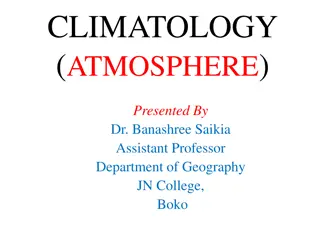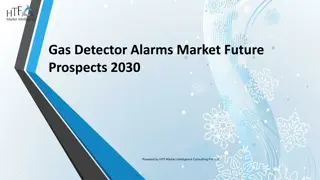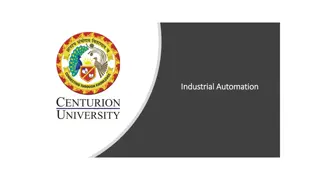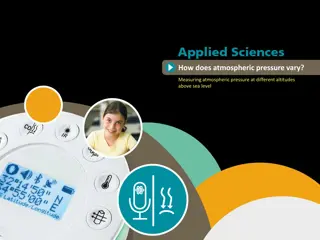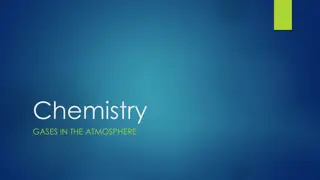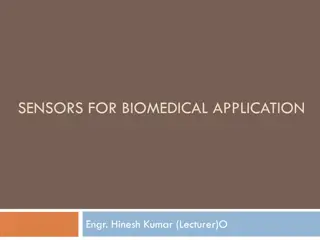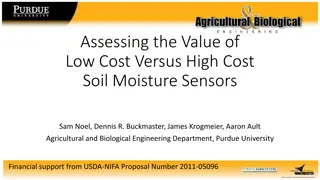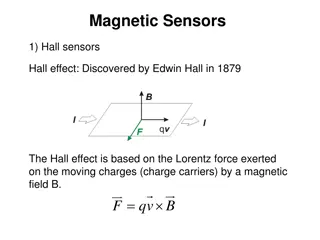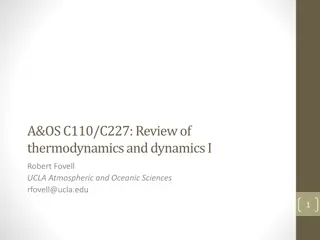Overview of Low-Cost Sensors for Atmospheric Composition Measurement
This publication provides an insightful overview of low-cost sensors for measuring atmospheric composition, covering topics like sensor technologies, applications in atmospheric sciences and air quality management, and evaluation methods. It emphasizes the importance of not only the technical performance of sensors but also the supporting framework for their effective use in various tasks. The content discusses sensor technologies such as electrochemical methods, metal oxide sensors, and optical sensors, along with applications in research, global change studies, and air quality compliance. Evaluation activities and the increasing interest in low-cost sensors are also highlighted.
Download Presentation

Please find below an Image/Link to download the presentation.
The content on the website is provided AS IS for your information and personal use only. It may not be sold, licensed, or shared on other websites without obtaining consent from the author.If you encounter any issues during the download, it is possible that the publisher has removed the file from their server.
You are allowed to download the files provided on this website for personal or commercial use, subject to the condition that they are used lawfully. All files are the property of their respective owners.
The content on the website is provided AS IS for your information and personal use only. It may not be sold, licensed, or shared on other websites without obtaining consent from the author.
E N D
Presentation Transcript
Low cost sensors for the measurement of atmospheric composition: overview of topic and future applications Editors: Alastair Lewis, Erika von Schneidemesser and Richard Peltier WMO-No. 1215 ISBN 978-92-63-11225
Authors Lead authors: Candice Lung, Prof Rod Jones, Christoph Zellweger, Ari Karppinen, Michele Penza, Tim Dye, Christoph H glin, Prof Zhi NING, Roland Leigh, David Hagan, Olivier Laurent, Greg Carmichael Contributing authors: Michel Gerboles (EU), Pierpaolo Mudu (WHO), Sean Khan (UN Environment), Ron Cohen, Oksana Tarasova, Drew Gentner, Jesse Kroll, Eben Cross, Xavier Querol Carceller, Gufran Beig
Approach Based on peer-reviewed publications through 2017 Applications of sensors, definitions, sensor performance, evaluation exercises and facilities, quality assurance , conclusions and recommendations Covers: Reactive gases or other air pollutants including NO, NO2, O3, CO, SO2, and total VOCs. Long-lived greenhouse gases: CO2 and CH4 Airborne particulate matter (PM)
Covered technologies Electrochemical method Metal oxide Photo-ionization detectors (PID) Optical (light scattering, NDIR)
Discussed applications Application Research in the atmospheric sciences Long-term global change Air Quality compliance / regulation Low-cost sensors and their application in the atmospheric sciences therefore need to be considered not only in terms of the technical performance of individual devices but the supporting framework that can successfully support their use for specific kinds of tasks. Air Quality management Public Information Personal exposure
Sensor vs sensor system (courtesy of Rod Jones University of Cambridge, UK)
Evaluation activities for low-cost sensors Near exponential growth in interest in low-cost sensors Mainly regulatory and citizen science, lesser extent in academia Performance evaluation projects evaluating quality of the data produced by air sensors by comparing sensor systems against reference instruments in the laboratory and in the field. Complementary to this, demonstration projects have explored how the use these sensor systems may give new insight into atmospheric processes. There are many interested users and performance and demonstration projects have engaged governmental organizations, research groups, city departments, and community groups all seeking to understand how LCS may be used.
Its complicated Known issue (effect) with sensors Sensor type Pollutant Sulphur Dioxide (SO2) Relative humidity Temperature Cross-sensitivity of reducing gases (e.g. H2S) Electroche mical Relative humidity Temperature Cross-sensitivity of oxidizing gases (e.g. NO2, H2S, Cl2) Long term stability (ageing or drift) Ozone (O3) Carbon monoxide (CO) Relative humidity Temperature Cross-sensitivity of reducing gases (e.g. CH4, Alcohols, NH3, etc.) Nitrogen Dioxide (NO2) Relative humidity Temperature Cross-sensitivity of oxidizing gases (e.g. O3, H2S, Cl2) Long term stability (ageing or drift) Relatively long start-up time to sensor stabilization Carbon Dioxide (CO2) Relative humidity Temperature Cross-sensitivity of reducing gases (e.g. CO) Photo- ionisation detectors (PID) Total Volatile Organic Compounds (VOCs) Relative humidity Temperature All VOCs with Ionization Potential lower than the lamp output are detected (e.g. benzene, toluene, ethylbenzene, xylene, esters, alcohols, ketones, etc.) Sulphur Dioxide (SO2) Relative humidity Temperature Cross-sensitivity of reducing gases (e.g. NO2, H2S) Long term stability (ageing or drift) Optical (light scattering, NDIR) Particulate Matter (PM1.0, PM2.5, PM10) Relative humidity (creates overestimate of PM) Harsh environments (high humidity and high temperature) decrease the accuracy of the sensors. Stability of the flow of the sensor that alters the quantity of particles being sampled and modifies the distribution of PM. For example, low flow (or velocity) may prevent the heavy particles from entering into the sensor. Density, colour, shape and refractive index of PM Carbon monoxide (CO) Relative humidity Temperature Cross-sensitivity of reducing gases (e.g. H2S, SO2, CH4, Alcohols, NH3[MG1] , etc.) Long term stability (ageing or drift) Metal oxide Response time > 5 min Sensor response is not linear Relative humidity Temperature Long term stability (drift) Varying baseline after re-start Ozone (O3) Nitrogen Dioxide (NO2) Response time > 5 min Sensor response is generally not linear Relative humidity Temperature Short and long-term stability(drift) Varying baseline after re-start Carbon Dioxide (CO2) Relative humidity (it is not a gaseous interferent in IR, while humidity may alter the optical beam) Temperature Pressure
Application Summary LCS Application Qualitative Opinion as of 2017 Research in Atmospheric Science Just beginning to be useful Long Term Global Change Not quite ready long term stability of LCS still in question Air Quality Compliance/regulation Not yet sensors usually do not follow regulatory requirements for measurement equivalence Air Quality Management Yes, an early application area for LCS systems Public Information/Citizen Science Yes, an early application are for LCS systems. Especially useful for educational purposes Proxy for Human Exposure Emerging field; useful for qualitative results only.
Calibration and Quality Assurance/Quality Control of LCS Important factors to consider are temperature, relative humidity, and cross- sensitive gas species (can be found in data sheets and in literature) for gas- phase sensors, and relative humidity, composition, size distribution, and optical properties for particle sensors.
What about the data? Lacking QA, the data are not useful. Co-location in field and lab sometimes (often?) lead to different results. Citizen science can lead to wrong conclusions without proper guidance. Machine learning important, but at what point does a LCS become a model variable and stop being a sensor?
Where sensors seem to fit best (now, at least)
LCS Document Conclusions Can LCS measure Literature-based Conclusions Useful for short-term trends (hours to days to months) Temporal Variability Useful, as long as sensors report reproducible measurements across different sensors Spatial Variability Limited evidence, because it requires comparison against long term trends; quantitative insufficiency. Concentration Dependence Not suitable for quantitative assessment. Personal Exposure Not suitable Long Term Trends
For manufacturers and systems providers Manufacturers should provide information on the characterization of sensors and sensor system performance, in a manner that is as comprehensive as possible, including results from in-field testing. More information on sensor lifetimes and degradation over extended periods of time is needed Where algorithms and data manipulations are used to improve data quality, the basic principles of this should be made clear to the user.
For users and operators of LCSs Users of LCS should have a clearly-defined application scope and set of questions they wish to address prior to selection of a sensor approach. The user community should continuously evaluate LCS performance through verification and/or comparisons performed under real- world conditions ideally through ambient field deployments against reference instruments and report those results openly There is a need to develop harmonized standards and guidelines for sensor performance evaluation. Demonstration and research projects should where possible strive to include within LCS networks locations or nodes where several identical sensor systems are co-located together. Adopt and utilize best-practices for data management and documentation of associated data regarding implementation conditions.
For the broader community who may use LCS data Renewed efforts are needed to enhance engagement and sharing of knowledge and skills between the data science community, the atmospheric science community and others to improve LCS data processing and analysis methods. Adoption of open access and open data policies to further facilitate the development, applications, and use of LCS data is essential. Continue to support (with data, advice, resources) activities that improve validation and/or verification for LCS and consider expanding to a wider range of environmental and pollution conditions.
Resources to Consider AQ-SPEC (http://www.aqmd.gov/aq-spec) OpenAQ (http://www.openaq.org) Various established sensor networks (see WMO Document 1215 for more information) To share your experience, publications and related meetings please use the LCS forum https://wmoairsensor.discussion.community/
